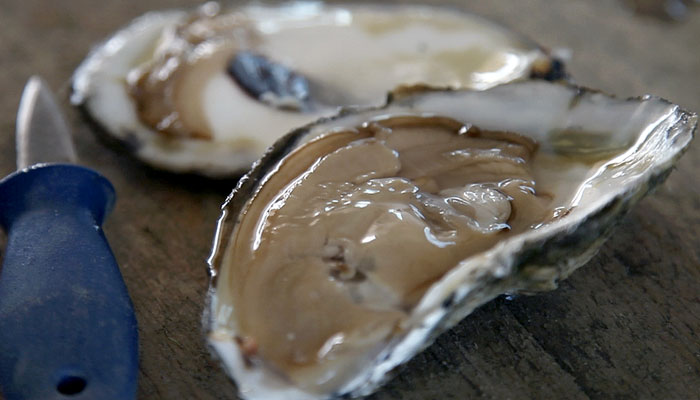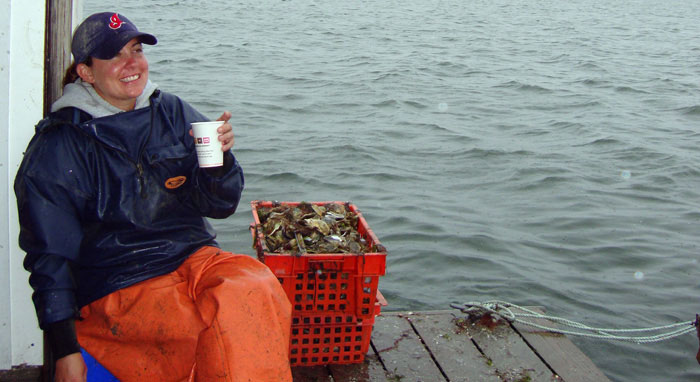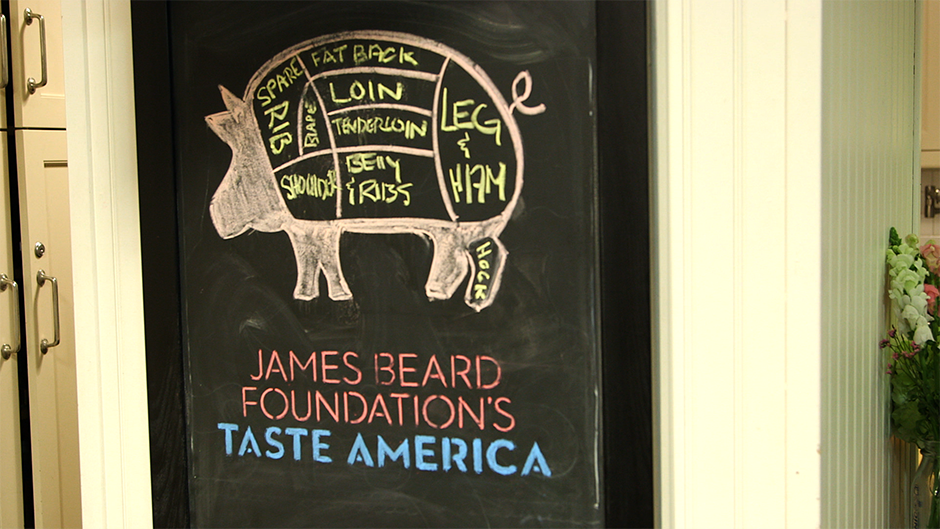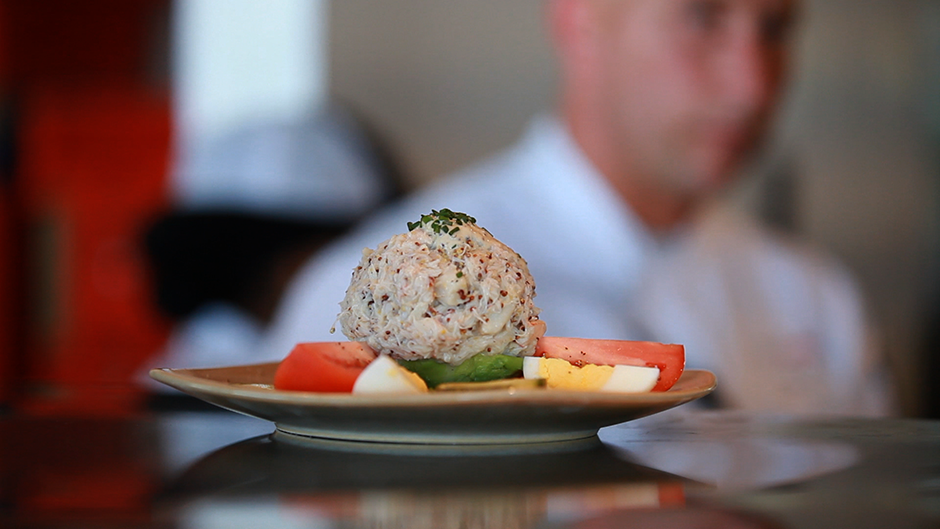The challenges of shopping for seafood in a land-locked state
It’s safe to say that I’ve been spoiled when it comes to getting access to fresh seafood. In 2009, I went to work on an oyster farm called Island Creek Oysters, which sits on the bay in Duxbury, Massachusetts.
I spent a year and a half working alongside farm-owner Skip Bennett and his crew in order to learn all about the business of bivalves and eventually wrote a book about the experience: Shucked: Life on a New England Oyster Farm. Working on the farm, I not only learned how to farm raise oysters from larvae to half shell, I was exposed to a lifestyle that involved daily access to an amazing wealth of seafood—lobsters, clams, mussels, striped bass, scallops, porgies, and of course, oysters.
We often pulled a grill and a steam kettle out to our floating barge and cooked right there at the water’s edging, steaming the lobsters caught in one of Skip’s traps or grilling a striped bass that one of the farmers had caught with a rod that morning. We’d shuck oysters and skip the shells across the water. The men and women I worked with were accustomed to eating this way, with dinner so fresh, you could stand next to the water where it had been caught or harvested. And for that all-too-brief 18 months that I was on the farm, I was lucky enough to enjoy those same perks.
It was the only time in my life that I’ve known a waterway so intimately. At the time, I could tell you when the bass were starting to make their run, or when the tide would be right for digging mussels. I realize now how fortunate I am to have had that environmental lesson—my guess is that only a small percentage of people in our country can say the same.
My life has changed dramatically since I left the farm. I’ve since published the book, had a son, and moved with my family to Nashville, Tennessee. And while the book and motherhood have been a shock to my system, so too has the move. Transitioning from the North to the South is one thing—but the biggest culture shock for me was losing access to the ocean.

I still eat fresh seafood. For my family and our health, I try to cook with fish a few times a week. What’s more, I’m in the middle of co-authoring a New England-themed cookbook (due out Fall 2014) with chef Jeremy Sewall, the Boston-based chef of the Island Creek Oyster Bar, Lineage, and Eastern Standard Kitchen & Drinks. Jeremy’s specialty is seafood (obviously, much of which is native to New England) and more than half of the recipes in the book are seafood based. As his co-author, I’m doing my best to test as many recipes as I can… when I can actually get my hands on the seafood called for in his recipes. Living in a landlocked state means I’m at the mercy of whatever I can find at my local stores.
And, like so many of the users of any cookbook, if I can’t find the ingredients, then I’m not likely to make the recipe. It’s an important challenge to face as a cookbook writer, but one that’s not easy to overcome.
Thankfully, parts of the seafood industry are on my side. Distributors are now capable of getting fresh fish and shellfish shipped anywhere in the country overnight, meaning it’s off the boat in the morning and hitting shelves the next day. I can order from any number of online purveyors and have exactly what I need shipped to me in 24 hours. It will never be as fresh as what I found while working at Island Creek but it can get pretty close.
But what about the days when I want to go to the store and bring home something to cook that night? What about the seafood that’s actually in stores here in Tennessee? Just because seafood can be delivered fresh doesn’t mean that I’ll get what I want—or need—wherever I look.
And then there is the question of finding seafood that is, for lack of a better term, sustainable. My experience working with both fishermen and chefs leaves me believing that there is no such thing as a truly “sustainable” option, unless we stop eating seafood altogether. But I’ve also learned that there are some fisheries that are managed better than others, including striped bass and Atlantic mackerel (Paul Greenberg wrote this great piece in Food & Wine about domestic species that are OK to eat right now). And some farmed varieties of seafood (oysters, clams, inland-farmed shrimp which you can find from Kentucky, and rainbow trout) are smart buys since they are using safe and sustainable farming practices. So even if I never again get to grow or catch the seafood I’m eating, I can still make smart purchasing decisions to ensure that what I’m buying isn’t wiping out a species or demolishing the environment where it’s caught.
Setting Guidelines
All of which is why I sent myself on a mission: To seek out one or two reliable local sources for fresh seafood, sources that I can return to again and again that fulfill the tricky balance of offering both a wide variety and environmentally safe options. Nashville is not known for its fish markets, but I was determined to find the right fit.
To start, I dug up an old article I’d written for a magazine that’s now out of print. In the piece, I outlined five general rules to follow when shopping for seafood:
-
Befriend a Fishmonger
By getting to know the person selling your seafood, you can ask the right questions and learn a lot about the products, when they arrived, and where they came from.
-
Buy wild … but don’t discount all farmed
For the most part, species that are wild caught are better for the environment than farmed—unless those farming systems are responsible and sustainable.
-
When in doubt, buy domestic
The United States has some of the most highly regulated fisheries in the world. There are also some northern European fisheries, like sea bass and herring, that are very well maintained.
-
Be wary of organic
The USDA does not yet have a certification program for organic seafood, but that doesn’t stop international producers from labeling their seafood as such.
-
Diversify
Don’t get in the rut of buying one type of fish every week; pick from a range of options and mix things up, making mussels one week and rainbow trout, wild salmon, or swordfish the next.
Those reminders planted firmly in mind, I started doing some research. I found very little online about decent fish markets in Nashville.
The public rated some places as being better for their seafood selection than others. They included specific grocery stores and a local company called Wild & Local Foods, so I targeted those in search of a range of accessibility and convenience.
First Stop: The Wholesale Club
I never thought I would choose a big-box wholesale club for seafood, but it was out of sheer curiosity as well as a solid lead. Friends of ours regularly invite us over and serve us salmon from one of these stores—it’s farmed, they admit, but always delicious. I needed to go to the source and learn what I could out about that selection from its labels and employees, snd see what else a store like this offers.
In an acres-long room, under harsh neon lights, I found a single seafood display case packed with mounds of identical, cellophane-wrapped packages: piles of steelhead trout, slabs of glistening salmon, dozens of cookie-cutter tilapia fillets.
The labels had very little information. The salmon and trout were both labeled “farm raised in the U.S.”; the scallops, an ingredient I actually needed for a recipe I would test that night, were labeled “wild previously frozen American scallops.” Following the When in doubt, buy domestic and Buy wild mantras, this would be my ideal choice today. But where were the scallops really from?

I found an employee who was wearing a hairnet and white coat and asked what he knew about these scallops and their origin. He smiled but shrugged slightly, then pointed to the label itself.
“They’re American but I don’t know where exactly,” he said.
“Is there someone here who does know? Who orders the seafood?” I wondered.
“That would be me,” he smiled again. “But we don’t get that information. You can go try looking on our website.”

I ended up buying the scallops and heading home to get more info online. Information was hard to come by, both on and off the store’s website. Nowhere on the site was there a section outlining the store’s seafood-buying policies; and, in fact, after a quick search, I found numerous articles about how groups like Greenpeace have spoken out against this particular wholesale club for its lack of sustainable seafood policies. The scallops themselves were meaty and firm, yes. But when they’re sold in bulk like this, how much damage is being done to those stocks or the environment? Without a thorough investigation, I doubt I’ll ever know.
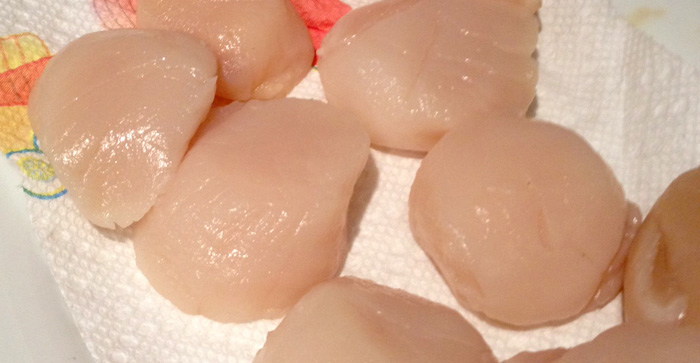
Second Stop: The Everyday Grocery Store
My next stop was one of the country’s largest grocery store chains. The location I visited is actually recommended on sites like Yelp for its seafood selection—and it happens to be close to home, so I’m familiar with their brightly lit display counters, which always seem to be loaded up with fresh ice and are usually manned by a helpful employee. The day I arrived, a fishmonger named Robert was behind the counter. Taking my own advice to Befriend a fishmonger, I asked Robert if he could help me track down a few items, like swordfish. He didn’t have any that wasn’t frozen, he replied, because so many people are afraid of mercury these days.
“I order it and end up throwing a lot of it away,” he admitted.
“There were a number of slabs of shark,” I noted, “which can also be high in mercury.”
“Well, people love it on the grill,” he said smiling. “I might be able to track down swordfish in the freezer case, but it’s the same that I put out here,” he added.
I peeked over at the freezer case to see what else he offered there and noticed a bag of shrimp labeled USDA organic—in some cases, farmed shrimp is considered livestock, which is why it can fall under the USDA designation. I kept an eye out for any other recognizable labels like the Marine Stewardship Council’s blue and white symbol, which is one of the most recognizable and one that I trust since the MSC goes through a rigorous process to certify that their fisheries are sustainable. Unfortunately, I didn’t see any.
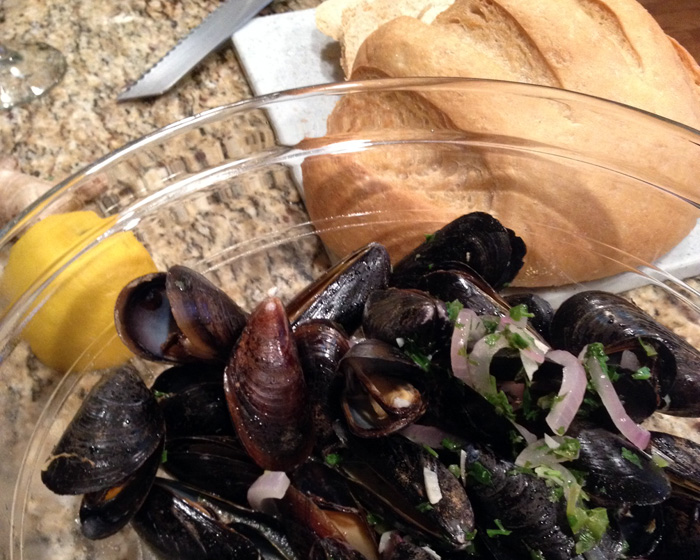
Back at Robert’s counter, he told me that if I wanted to wait a few days, he’d be happy to order something special for me like New England lobsters, for example, or wild shrimp versus the farmed that sat in the case. In front of me were a few whole river trout that were skinned and cleaned, as well as farmed salmon, oysters, and a pile of mussels.
“The mussels are great, I got those in this morning. Fresh from Canada,” Robert explained.
“Do you know where specifically?” I asked.
He admitted he didn’t know off the top of his head, but said he would be happy to track down the order sheet to find out the distributor. I walked away with a few pounds of mussels and an agreement to call ahead any time I needed to put in an order. That night, we steamed the mussels with pilsner, garlic, red onions, and cilantro, and they turned out beautifully.
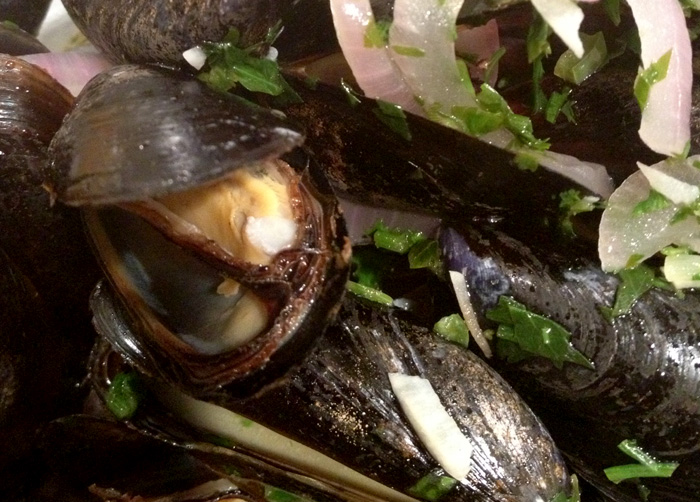
Still, I felt that I was missing something by hitting these big chains.
Even though Robert assured me that he’s the one who orders for his own store, those orders were coming through a large-scale distributor, meaning it would be difficult to ever know who caught it or what practices they used. I wanted to find a seller that got me one step closer to the source.
Third Stop: The Independent Fishmonger
I decided to try my luck with Wild & Local Foods, an independent retailer that operates a permanent stand at the year-round Nashville Farmers Market. The day I visited, it was bustling and their cases were full of meat from both land and sea. Right away I could see that the selection was small but solid. There were trays of rainbow trout, halibut, and oysters that were all well labeled. I started talking with Brent, who worked behind the counter. He mostly sold to wholesale and restaurant accounts, he said, but that meant they could get access to fish from anywhere in small quantities.
“Are you looking for something specific?” he asked.
“I’m on the hunt for striped bass, lobsters, mussels, and oysters,” I told him.
“We work closely with a couple of New England suppliers like Brown Trading Company out of Maine,” he explained.
Familiar with Brown, I was confident that he was using quality suppliers. He would be able to tell me which New England port his bass was coming into or where precisely on the Gulf the oysters hailed from. He had more halibut coming in the morning from the Pacific, he said; he also had Maine scallops on the docket later that week. I took his card and made a mental note to order directly from him next time I needed a specific ingredient—monkfish, for example, which I hadn’t seen anywhere in town up to that point but would need for one of Jeremy’s recipes. Brent told me he had a guy and just needed a few days’ notice, depending on the season.
The Takeaway
Satisfied, I realized I had found both a consistent, everyday store to go to for weeknight meals as well as a solid option for my recipe-testing needs. Asking the right questions and understanding that I can shop beyond the shelf was a big part of the process, but so too was the idea that with a little research, seafood shopping in a landlocked state could be lucrative. Nothing will beat the freshness and accessibility I had when working on the docks at Island Creek, but I can come incredibly close and still manage to support the businesses right around me.
And when I need oysters, I’ll take solace in the fact that Island Creek ships overnight.
